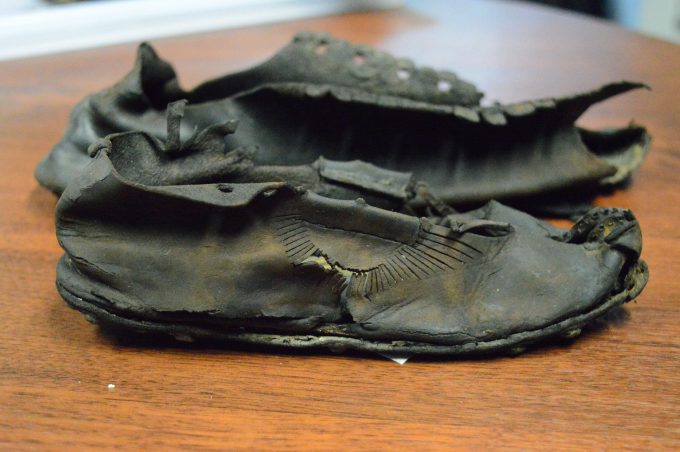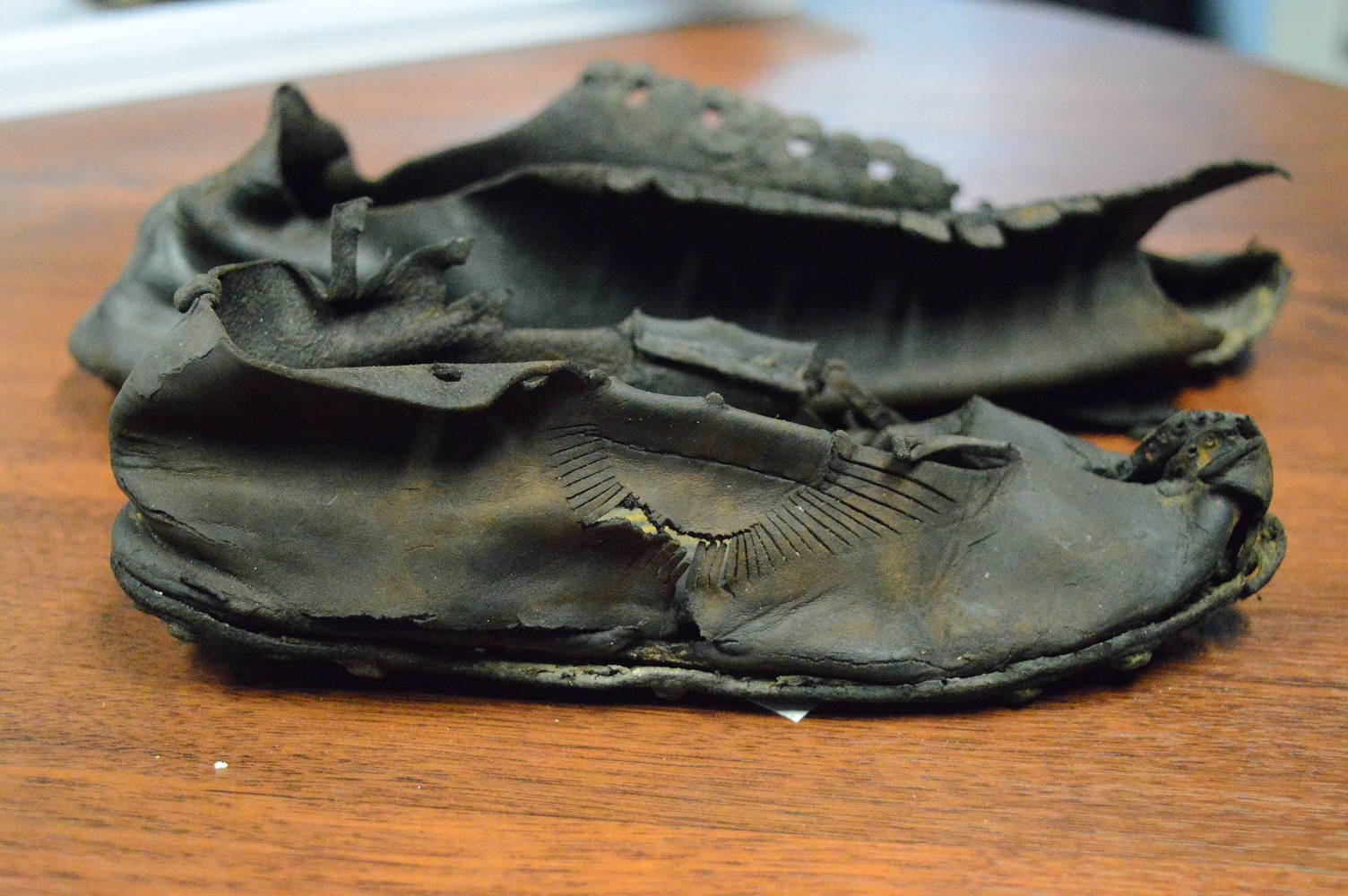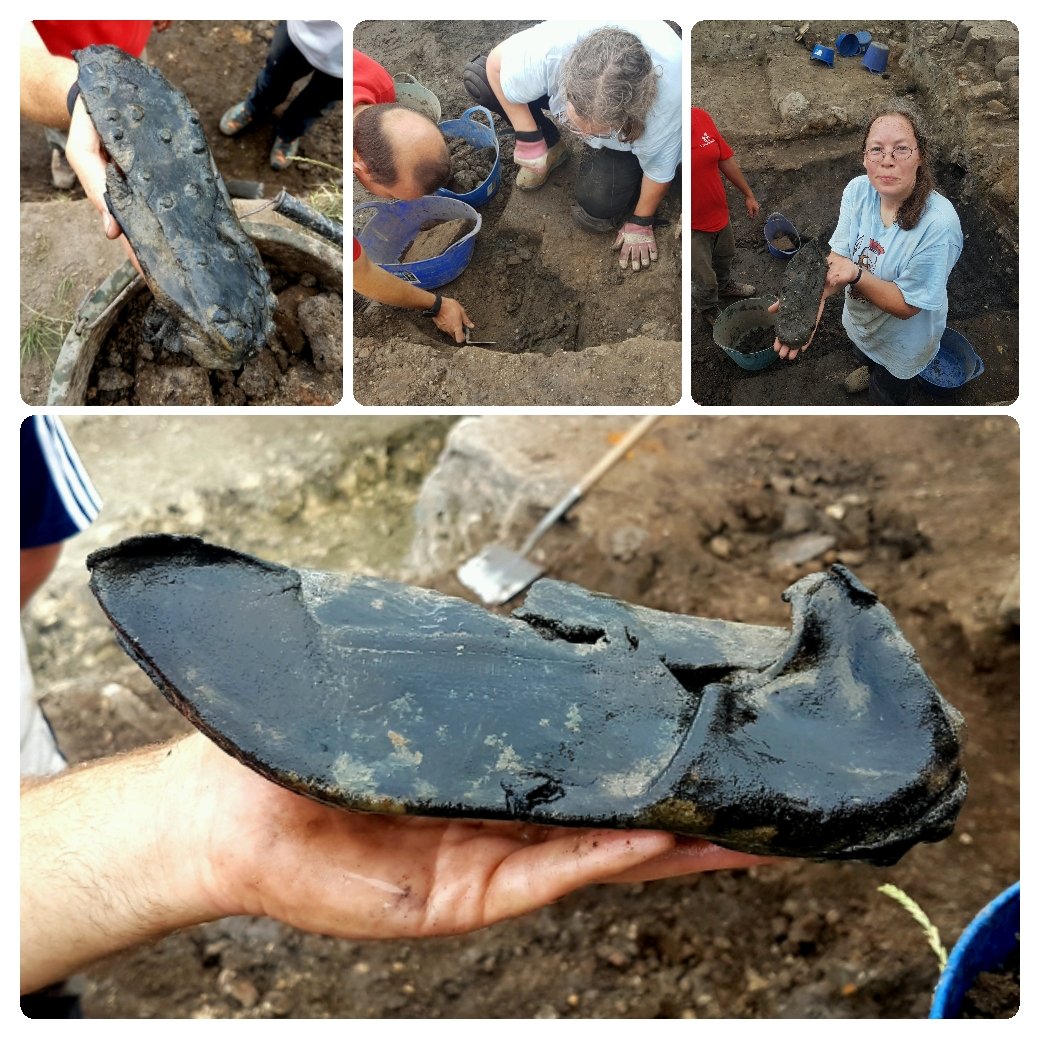Archaeologists have revealed the discovery of hundreds of Roman shoes and other objects at Hadrian’s Wall.

A pair of the Roman shoes discovered at Hadrian’s Wall – photo courtesy the Vindolanda Trust
In 2016, the Vindolanda archaeologists excavated the ditch and discovered an incredible time capsule of life and conflict, and amongst the debris were dog and cat skeletons, pottery, leather and 421 Roman shoes. Visitors who were lucky enough to come to Vindolanda this summer watched in amazement as shoe after shoe was found in the ditch, each one a window into the life of type of person who might have once worn it. Baby boots, small children’s shoes, teenagers, ladies and men’s boots, bath clogs, both indoor and outdoor shoes.

What has been uncovered conceivably represents more than one shoe for every person who lived inside the fort at Vindolanda at that time. Dr Andrew Birley, the Vindolanda Trust’s CEO and Director of excavations was thrilled with what he calls ‘an unbelievable and unparalleled demographic census of a community in conflict from two millennia away from today. The volume of footwear is fantastic as is its sheer diversity even for a site like Vindolanda which has produced more Roman shoes than any other place from the Roman Empire’.

The shoe hoard also gives an indication of fashion and affluence of the occupants in AD 212 with some very stylish and well-made shoes, both adults and children’s, a fact which has captured the imagination of football fans with one child’s shoe in particular being likened to a modern Adidas Predator boot. Sonya Galloway, The Vindolanda Trusts Communication Manager noted that ‘the popularity of just one of the shoes has given great exposure to our collection here. It is one of the great assets of Vindolanda’s Designated collection that many of the artefacts are everyday items, things that we can directly connect with, it is the fact that they are so well preserved and almost 2000 years old which is simply extraordinary’.

The shoes are now being conserved on site with a specifically re-adapted building to cope with the quantity of finds. The Trust’s Curator Barbara Birley noted ‘the volume of footwear has presented some challenges for our lab but with the help of dedicated volunteers we have created a specific space for the shoe conservation and the process is now well underway’ Barbara went on to say ‘The Vindolanda Trust is committed to the excavation, preservation and public display of its finds although each shoe costs between £80 and £100 to conserve.

Finding so many shoes this year has resulted in significant additional costs for the laboratory’. In light of the cost associated with the shoe hoard the Trust has launched a fundraising campaign asking for support from the public to ‘conserve a shoe’.

Dr Andrew Birley commented the Trust does not receive any external funding towards the excavation programme and we exist as a result of visitors to the site and through the support of our volunteers and Friends of Vindolanda. This year has been exceptional and we hope 421 generous people will come forward and donate £80 to help us specifically with the cost of conserving these shoes’. All those who conserve a shoe will receive a numbered Certificate of Conservation full details of how to conserve a shoe can be found on the Vindolanda website: www.vindolanda.com/conserve-a-shoe